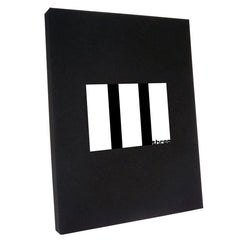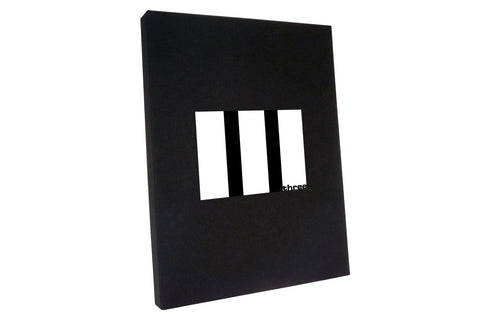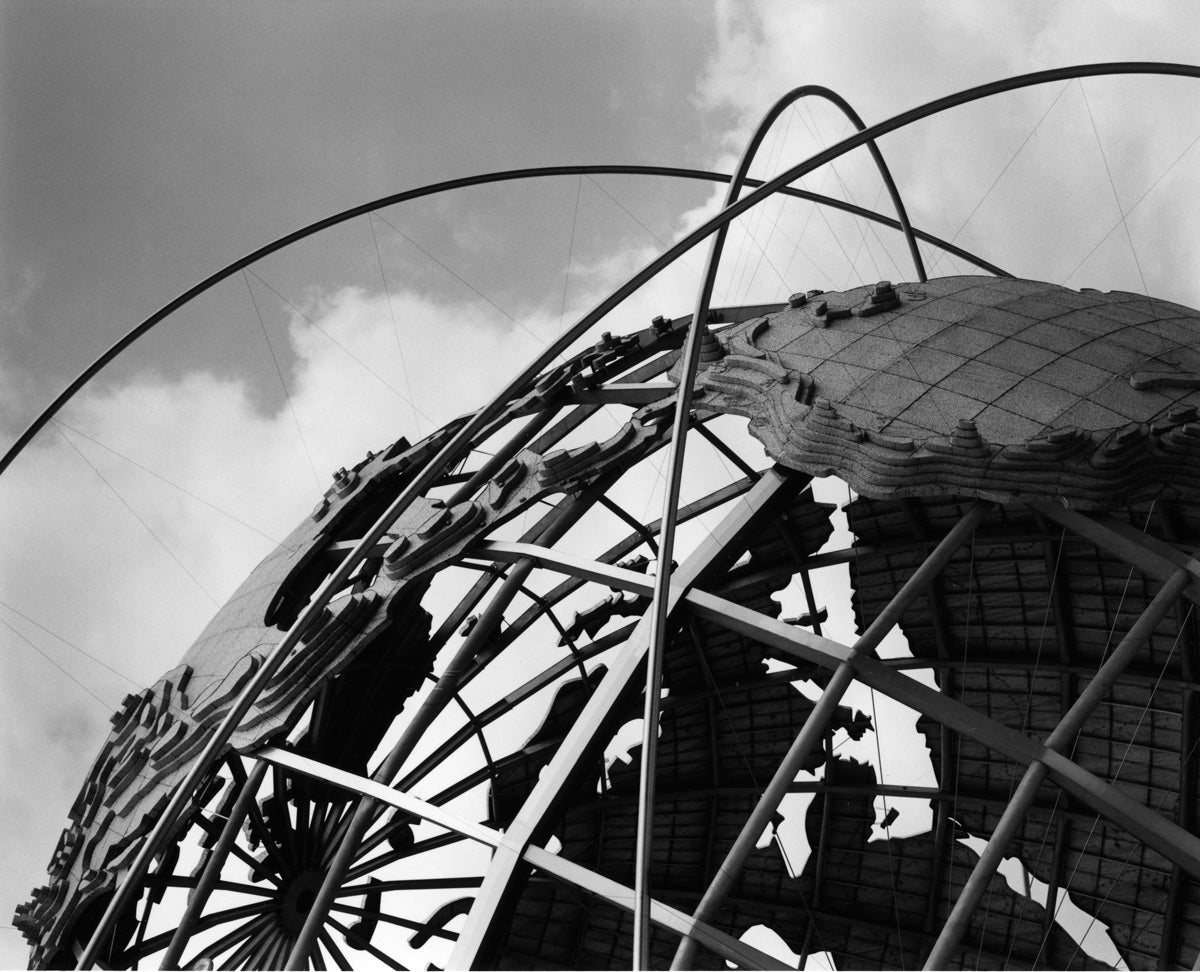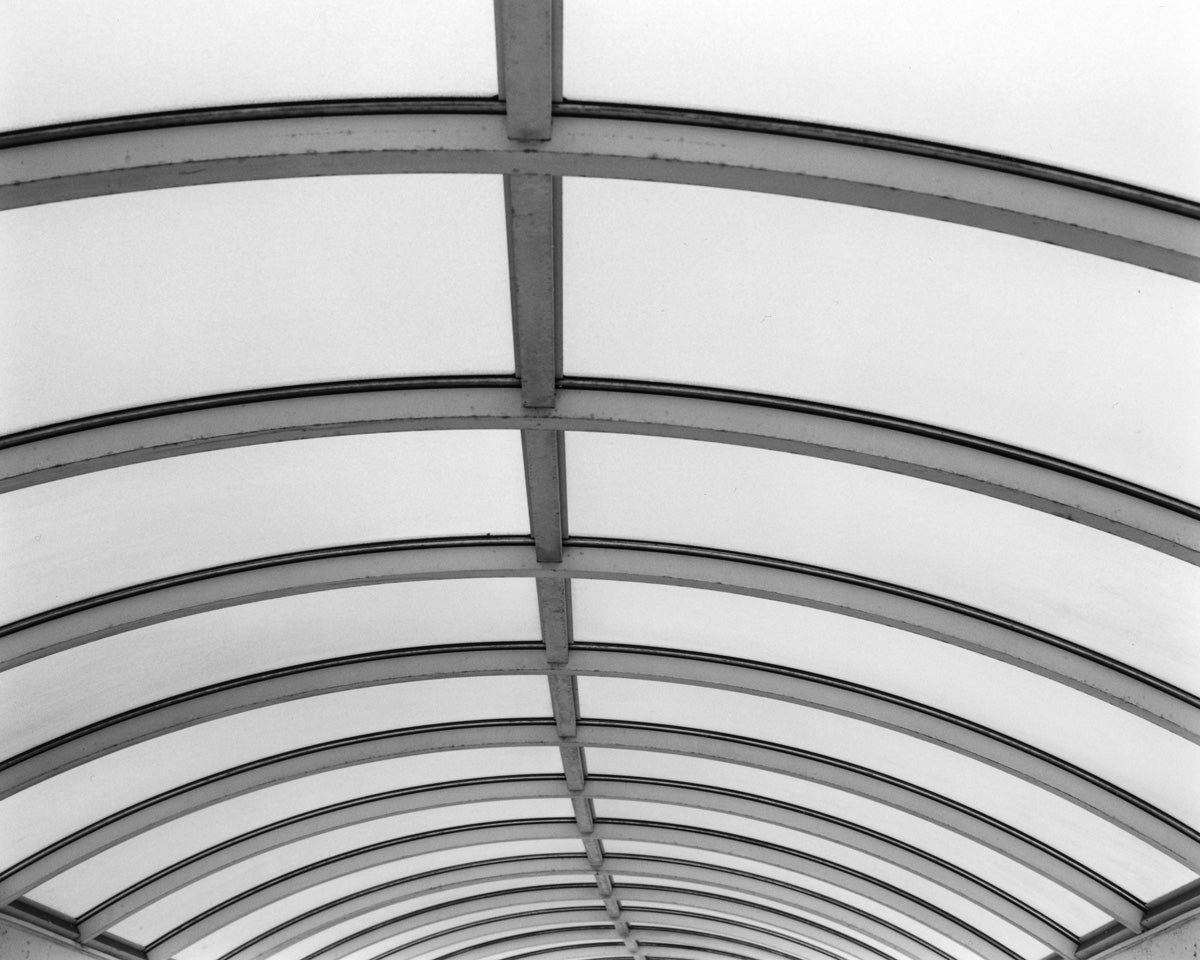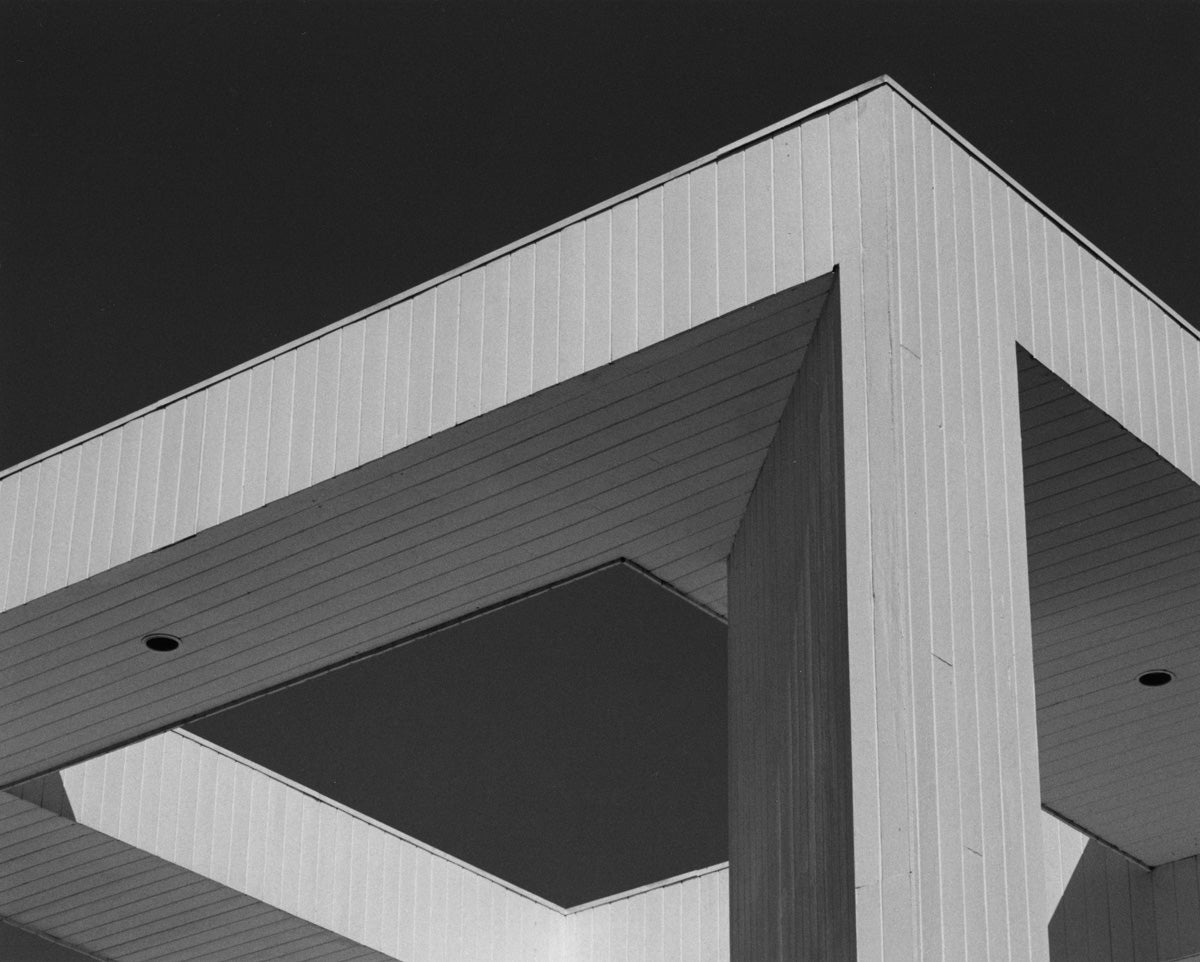Three
By Michael Dweck
Art Edition limited to 100 numbered copies - clothbound book (90 pages) packaged in clothbound clamshell box, each signed by Michael Dweck, includes a choice of silver gelatin prints: “Curves”, “Forward” or “Morph” (New York, 2005) – format: 20.3 x 25.4 cm (8 x 10 in.).
Three photographic prints (Curves, Forward, Morph), specially produced by the artist for this edition, are each housed in a handsome, custom-made cloth slipcase box.
The box also includes a fully illustrated cloth bound catalogue from the exhibition Three, held in Auyama, Tokyo, September 30 – December 15, 2005. Each catalogue is signed and numbered, with the corresponding number on the print.
In this collection of 45 duotone photographs presented in a suite of triptychs, Michael Dweck records the natural and man-made beauty found in and around New York. Made over a period of a year, Dweck presents a series of timeless images ranging from icons of modern and contemporary architecture, to nudes, land and seascapes, aircraft and automobiles.
Classical, sculptural and often abstract, these arresting images emphasize the aesthetic appeal and purity of form. Dweck’s aesthetic is cool and refined, his sparse composition and controlled modeling of light evoke solitude and contemplation.
Collectors of fine art photography will relish this rare opportunity to own a signed, numbered, limited edition volume – as well as a silver gelatin print.
Printed in the USA, each copy will be signed and numbered, and packaged in a handmade, cloth-lined clamshell case, with an exclusive 8 x 10 silver gelatin print, also signed and numbered.
Art Edition No. 1-100
Three by Michael Dweck
- Essay by Michael Dweck
- Published by Ditch Plains Press, New York
- Clothbound accordion volume hardcover: 25.4 x 33 cm (10 x 13 in.) 90 pages, 45 duotone plates
- Limited to 100 copies
- Each book numbered and signed by Michael Dweck
- Includes a silver gelatin print “Curves”, “Forward” or “Morph” (New York, 2005) – format: 20.3 x 25.4 cm (8 x 10 in.) signed and numbered by Michael Dweck
- Release date: December 2005
- Printed and bound in USA
- Clothbound slipcase: 26.7 x 34.3 cm (10.5 x 13.5 in.)
The duotone illustrations are made with a special treatment for black and white images that produces exquisite tonal range and density.
About Michael Dweck
Michael Dweck is an American photographer, filmmaker and visual artist.
His work has been featured in solo exhibitions around the world, and become part of important international art collections. Notable solo exhibitions include Montauk: The End, 2004, a paradisiacal and erotic surf narrative set on Long Island; Mermaids, 2009, which explored the female nude refracted by river waters; and Habana Libre, 2010; an intimate exploration of privileged artists in socialist Cuba, which made him the first living American artist to have a solo exhibition in Cuba. These and other works have also been published in large, limited-edition volumes.
Previously, Dweck studied fine arts at the Pratt Institute in Brooklyn, New York and went on to become a highly regarded Creative Director, receiving more than 40 international awards, including the coveted Gold Lion at the Cannes International Festival in France. Two of his long-form television pieces are part of the permanent film collection of The Museum of Modern Art in New York. Michael Dweck currently lives in New York City and Montauk, N.Y., where he is finishing his first feature-length film.

Art Edition Michael Dweck: Three – No. 1-100
Curves, New York, 2005
Silver gelatin print
20.3 x 25.4 cm / 8 x 10 in. (paper size)
(Frame not included)
Morph, New York, 2005
Silver gelatin print
20.3 x 25.4 cm / 8 x 10 in. (paper size)
(Frame not included)
Forward, New York, 2005
Silver gelatin print
20.3 x 25.4 cm / 8 x 10 in. (paper size)
(Frame not included)
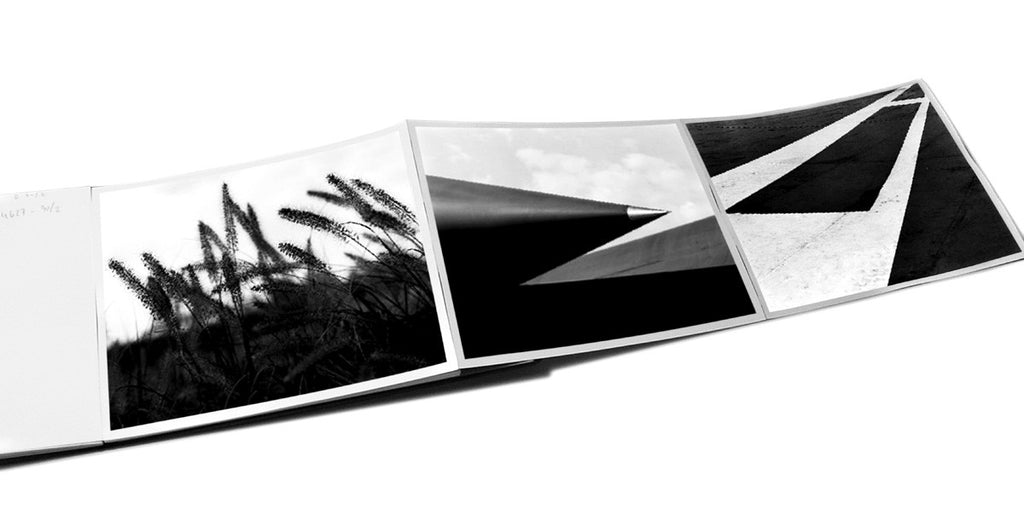

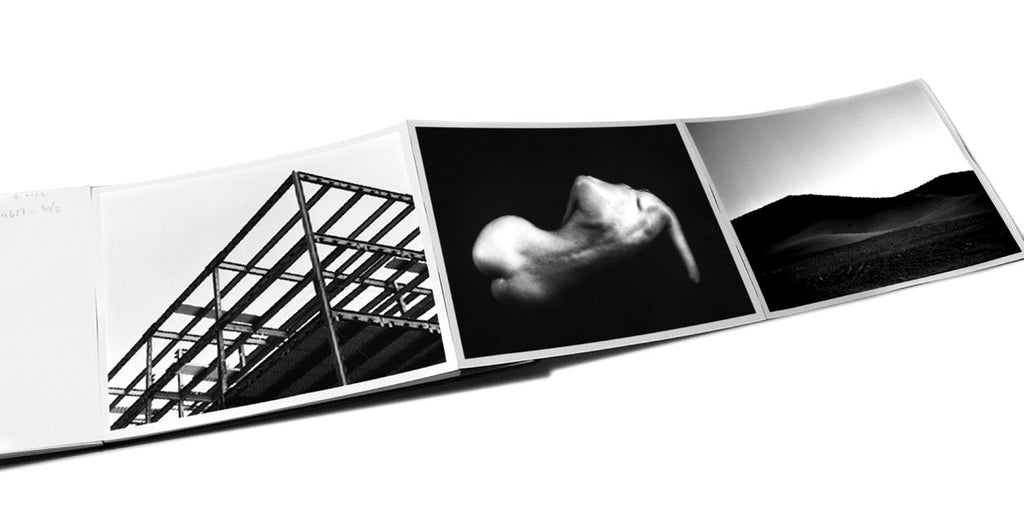
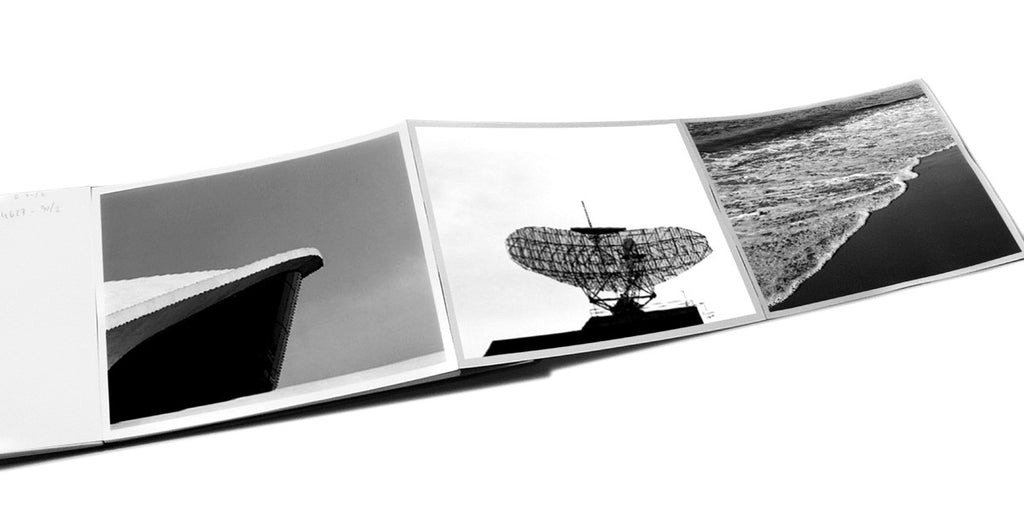
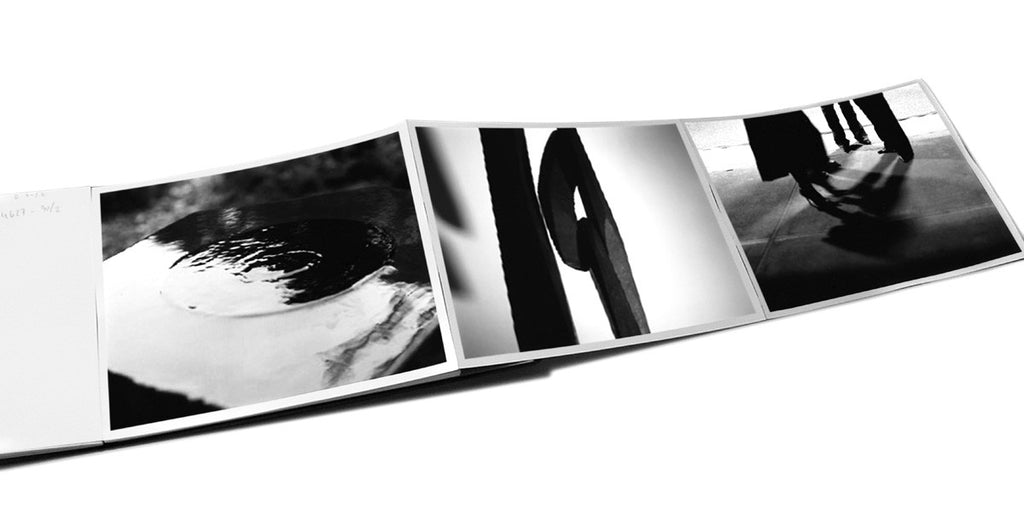
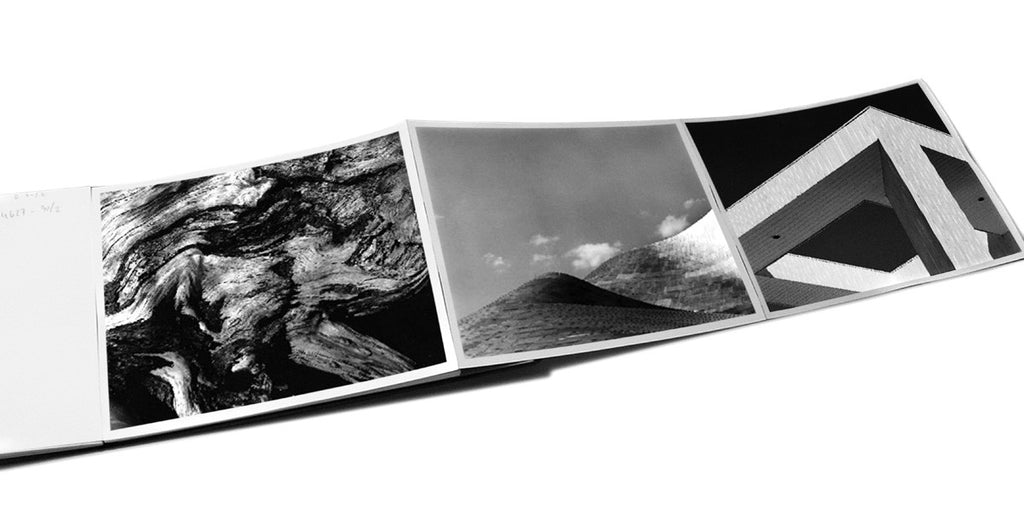
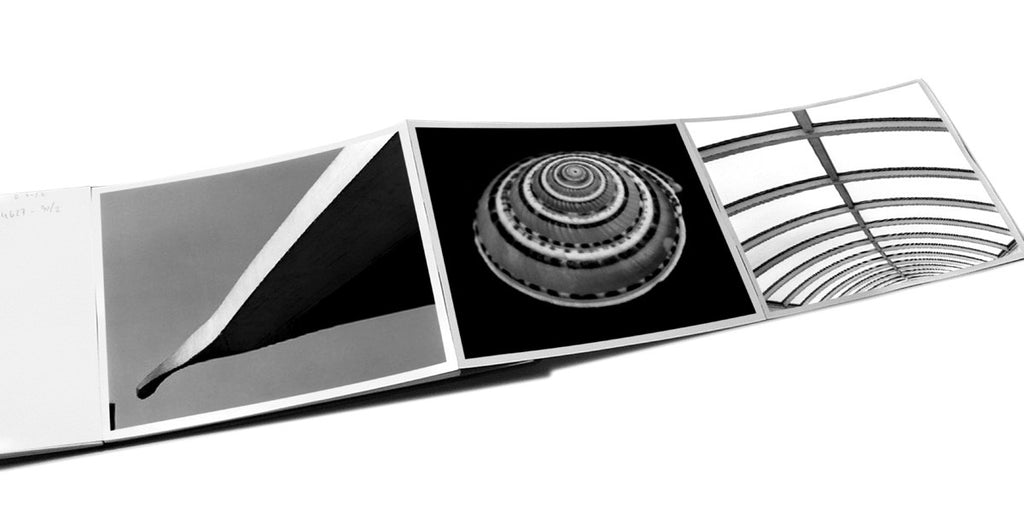

Michael Dweck: Mermaids
by Christopher Sweet
Whether diving in the blue refractions of a swimming pool or suspended like a seraph in the cool, pellucid depths of a spring or emerging tentatively onto a rocky shore, Michael Dweck’s mermaids are lovely and aloof and bare of all raiment but for their beautiful manes and the elemental draperies that surround them. Water, light, and lens converge to capture in modern guise the elusive creature of myth.
A diver plunges into deep dark water in a billowing ball gown of bubbles and foam. A figure rises slowly in the dark water, her back arched, her head back, her hair like exotic plumage spreading behind her. Another darts through the water in a roiling pool, her physical form appearing and disappearing in the distorting glass of the agitated waters. Yet another circles like a rippling wraith, a shadowy form, her hair in thick swirling liquid coils. The allure of these beautiful figures is made more compelling by their elusiveness, their strange remoteness, absracted as they are by this medium of water, immersed in this place beyond terra firma as in a dream. They would seem to have slipped the bonds of the mundane world into another element where the senses are altered, the laws are different, and only the elect are allowed. Even so, seeing them in Dweck’s photographs, they have the decided attraction of being real. We know they are of flesh and blood, their delectable bodies caressed by the enveloping waters and kissed by the play of light from above, their likenesses and perhaps a bit of their soul having been stolen by the intruder photographer—and pored over by unseen eyes.
Raised on Long Island near the ocean, Dweck often went night fishing along the south shore and off Montauk. When out fishing on moonlit nights, Dweck was always intrigued by the mysterious forms of fish passing swiftly by just under the surface like fleeting shadows, and he fantasized about falling overboard into the black waters and encountering those evanescent shapes and finding them to be beautiful women. The ancient allure of the mermaid. And so, having completed his project on the old fishing community of Montauk and its surfing subculture—the nostalgia for a real world paradise lost, Dweck was exploring the theme of the female nude in water. He began his new project in Amagansett and Montauk, photographing friends in pools and lake shallows from above, mostly at night. With a change of season, he flew south to Miami and continued to photograph in pools and near the ocean. Not satisfied with photographing from above, he began to look for a setting which would allow him to photograph underwater and came across the Weeki Wachee Spring, famed for its mermaid shows, where the water is clear, pure, of a light blue-green cast, and where he could photograph from an aquarium-like theater built into the bank of the eponymous river, or from a clear tank partially submerged in the river, and while swimming with his subjects.
When checking out the Weeki Wachee River, Dweck met a local young beauty who had been raised in nearby Aripeka, an island fishing village of a dozen or so families on the coast, and began photographing her. She has spent all her life in and on the gulf waters and in the many springs that surround the island, and she performed in the mermaid shows. In Aripeka the houses are built on stilts and babies are taught to hold their breath underwater. Making their living from the sea, surrounded by it, playing in it, growing up on the water, in a culture apart, Dweck was fascinated by the girl’s story and lifestyle—and the idea of the mermaid. And so the concept of photographing mermaids came fully into focus. Through the first girl, Dweck met other island girls, some of whom could hold their breath underwater for as long as five or six minutes. He photographed them alone, together, and at play, but mostly at night in the depths of the river.
Dweck’s image of the mermaid does not dwell on turgid fin de siècle fantasies nor the kitsch of Hollywood. He is enthralled by the female form, but also by the movement of water, by the play of light and shadow, distortion and reflection. He is interested in a sense of place and a place in time and the authentic inhabitants of such a place, but in this project he eschews telling details of the larger context and personality to focus closely on the nude female body isolated and abstracted by the fluid environment. In his vision of the mermaid he nonetheless exposes an aspect of life that is lived naturally as if uncorrupted, indeed pure. Whatever the circumstances of the lives of his subjects, they are members of a unique world. They are as they say “waterbabies” and it takes one borne of the water as they have been to connect deeply with them. Certainly they do not escape the claims of the real world, and yet one feels that for a time they do. They have a way of retreating, of withdrawal, of setting themselves outside of daily life, if only briefly, if only as long as a very deep breath.
Photographed underwater, whether from behind glass or otherwise, the figure floats in the field of vision as if front and back, top and bottom, and sides all change places at will at all times. Despite the glass wall, the river is not a proscenium. Only the light projected or filtering from above orients the viewer to the relative position of the body suspended in the water. Elegant postures and gestures and erotic positions are assumed unself-consciously and as easily relaxed. The veils and broideries of water, still and in motion, of shadow and light, conceal and distort as much as reveal. The fetching form of a pretty young girl may transmogrify into a raw mass of muscle, like a Francis Bacon painting, or strike a pose as exquisite as a classical ballet dancer on point. Torsos and limbs and features may dissolve in a painterly swirl, as of late de Kooning. We rarely catch a glimpse of their faces, only occasionally a nose or a nipple or a navel.
In legend and lore, the mermaid is a symbol of fatal seduction. She represents the self-destructive aspect of desire, the toxic allure of the unattainable. Like Ulysses one must be bound hard and fast to the mast of reality to successfully escape the illusions of unbridled passion. And yet the mermaid dwells in the sea and her sisters in ponds and lakes and springs. Water is the source of life, the essential means of purification, and the elemental locus of regeneration. Dweck’s mermaids are sensual and alluring, but also free and unfettered. The indeterminate world they inhabit, however briefly, is a private, peaceful place where they may find a serenity not possible in the world on dry land. But there is also something ruthless in the photographer’s somatic divagations, in the optical distortions of the lithesome bodies that he seizes upon through the roiling waters. It is the ruthlessness of the hungry eye of the photographer, who, like mermaids of yore, is a predator himself.
In the nineteenth century, images of mermaids abounded. The enticement of such images, as in the pallid picturebook paintings of a Waterhouse or a Burne-Jones, teased a Victorian sensibility. In America, the imperatives of popular culture have tended to domesticate the mysterious and eliminate dread and submerge the erotic in a cloying cuteness, so that the femme fatale figure of the mermaid has been reduced to an anodyne animation. The aquatic world of Dweck’s, however, is rather more luxe, calme, et volupté—where Matisse’s nymphs and dancing maenads or perhaps Yves Klein’s naked blue living female “paintbrushes” have gotten swept up in the blue-green veils of a Morris Louis canvas. In Dweck’s abstracting, painterly vision of the mermaid, where the depth of field of his lens is iterated by the water’s depths, he offers a vision of untrammeled beauty, without vanity or pretense, but natural, elegant, at times effervescent. The enchantment of place and physical charm, the shedding of clothing and psychic baggage, the meditative isolation of the underwater world, and the baptismal cleansing of the waters produce a transformation that only being truly in one’s element may confer—at least “till human voices wake us, and we drown.”
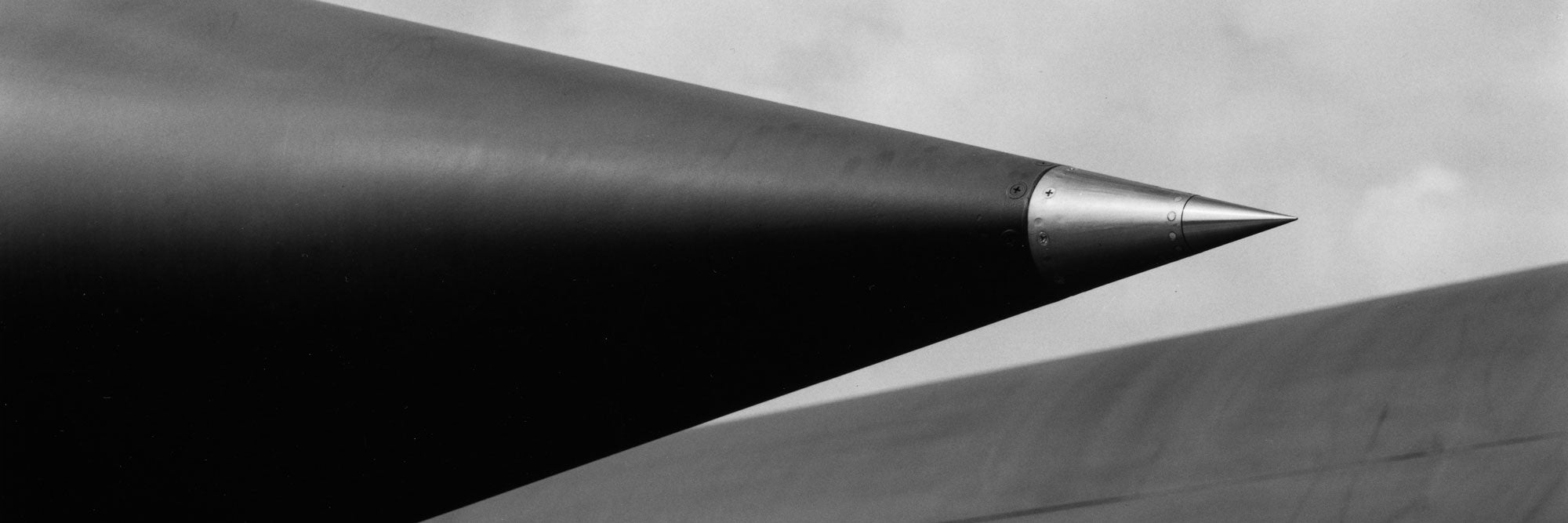
Three
By Michael Dweck
Art Edition limited to 100 numbered copies - clothbound book (90 pages) packaged in clothbound clamshell box, each signed by Michael Dweck, includes a choice of silver gelatin prints: “Curves”, “Forward” or “Morph” (New York, 2005) – format: 20.3 x 25.4 cm (8 x 10 in.).
Three photographic prints (Curves, Forward, Morph), specially produced by the artist for this edition, are each housed in a handsome, custom-made cloth slipcase box.
The box also includes a fully illustrated cloth bound catalogue from the exhibition Three, held in Auyama, Tokyo, September 30 – December 15, 2005. Each catalogue is signed and numbered, with the corresponding number on the print.
In this collection of 45 duotone photographs presented in a suite of triptychs, Michael Dweck records the natural and man-made beauty found in and around New York. Made over a period of a year, Dweck presents a series of timeless images ranging from icons of modern and contemporary architecture, to nudes, land and seascapes, aircraft and automobiles.
Classical, sculptural and often abstract, these arresting images emphasize the aesthetic appeal and purity of form. Dweck’s aesthetic is cool and refined, his sparse composition and controlled modeling of light evoke solitude and contemplation.
Collectors of fine art photography will relish this rare opportunity to own a signed, numbered, limited edition volume – as well as a silver gelatin print.
Printed in the USA, each copy will be signed and numbered, and packaged in a handmade, cloth-lined clamshell case, with an exclusive 8 x 10 silver gelatin print, also signed and numbered.
Art Edition No. 1-100
Three by Michael Dweck
- Essay by Michael Dweck
- Published by Ditch Plains Press, New York
- Clothbound accordion volume hardcover: 25.4 x 33 cm (10 x 13 in.) 90 pages, 45 duotone plates
- Limited to 100 copies
- Each book numbered and signed by Michael Dweck
- Includes a silver gelatin print “Curves”, “Forward” or “Morph” (New York, 2005) – format: 20.3 x 25.4 cm (8 x 10 in.) signed and numbered by Michael Dweck
- Release date: December 2005
- Printed and bound in USA
- Clothbound slipcase: 26.7 x 34.3 cm (10.5 x 13.5 in.)
The duotone illustrations are made with a special treatment for black and white images that produces exquisite tonal range and density.
About Michael Dweck
Michael Dweck is an American photographer, filmmaker and visual artist.
His work has been featured in solo exhibitions around the world, and become part of important international art collections. Notable solo exhibitions include Montauk: The End, 2004, a paradisiacal and erotic surf narrative set on Long Island; Mermaids, 2009, which explored the female nude refracted by river waters; and Habana Libre, 2010; an intimate exploration of privileged artists in socialist Cuba, which made him the first living American artist to have a solo exhibition in Cuba. These and other works have also been published in large, limited-edition volumes.
Previously, Dweck studied fine arts at the Pratt Institute in Brooklyn, New York and went on to become a highly regarded Creative Director, receiving more than 40 international awards, including the coveted Gold Lion at the Cannes International Festival in France. Two of his long-form television pieces are part of the permanent film collection of The Museum of Modern Art in New York. Michael Dweck currently lives in New York City and Montauk, N.Y., where he is finishing his first feature-length film.

Art Edition Michael Dweck: Three – No. 1-100
Curves, New York, 2005
Silver gelatin print
20.3 x 25.4 cm / 8 x 10 in. (paper size)
(Frame not included)
Morph, New York, 2005
Silver gelatin print
20.3 x 25.4 cm / 8 x 10 in. (paper size)
(Frame not included)
Forward, New York, 2005
Silver gelatin print
20.3 x 25.4 cm / 8 x 10 in. (paper size)
(Frame not included)








Michael Dweck: Mermaids
by Christopher Sweet
Whether diving in the blue refractions of a swimming pool or suspended like a seraph in the cool, pellucid depths of a spring or emerging tentatively onto a rocky shore, Michael Dweck’s mermaids are lovely and aloof and bare of all raiment but for their beautiful manes and the elemental draperies that surround them. Water, light, and lens converge to capture in modern guise the elusive creature of myth.
A diver plunges into deep dark water in a billowing ball gown of bubbles and foam. A figure rises slowly in the dark water, her back arched, her head back, her hair like exotic plumage spreading behind her. Another darts through the water in a roiling pool, her physical form appearing and disappearing in the distorting glass of the agitated waters. Yet another circles like a rippling wraith, a shadowy form, her hair in thick swirling liquid coils. The allure of these beautiful figures is made more compelling by their elusiveness, their strange remoteness, absracted as they are by this medium of water, immersed in this place beyond terra firma as in a dream. They would seem to have slipped the bonds of the mundane world into another element where the senses are altered, the laws are different, and only the elect are allowed. Even so, seeing them in Dweck’s photographs, they have the decided attraction of being real. We know they are of flesh and blood, their delectable bodies caressed by the enveloping waters and kissed by the play of light from above, their likenesses and perhaps a bit of their soul having been stolen by the intruder photographer—and pored over by unseen eyes.
Raised on Long Island near the ocean, Dweck often went night fishing along the south shore and off Montauk. When out fishing on moonlit nights, Dweck was always intrigued by the mysterious forms of fish passing swiftly by just under the surface like fleeting shadows, and he fantasized about falling overboard into the black waters and encountering those evanescent shapes and finding them to be beautiful women. The ancient allure of the mermaid. And so, having completed his project on the old fishing community of Montauk and its surfing subculture—the nostalgia for a real world paradise lost, Dweck was exploring the theme of the female nude in water. He began his new project in Amagansett and Montauk, photographing friends in pools and lake shallows from above, mostly at night. With a change of season, he flew south to Miami and continued to photograph in pools and near the ocean. Not satisfied with photographing from above, he began to look for a setting which would allow him to photograph underwater and came across the Weeki Wachee Spring, famed for its mermaid shows, where the water is clear, pure, of a light blue-green cast, and where he could photograph from an aquarium-like theater built into the bank of the eponymous river, or from a clear tank partially submerged in the river, and while swimming with his subjects.
When checking out the Weeki Wachee River, Dweck met a local young beauty who had been raised in nearby Aripeka, an island fishing village of a dozen or so families on the coast, and began photographing her. She has spent all her life in and on the gulf waters and in the many springs that surround the island, and she performed in the mermaid shows. In Aripeka the houses are built on stilts and babies are taught to hold their breath underwater. Making their living from the sea, surrounded by it, playing in it, growing up on the water, in a culture apart, Dweck was fascinated by the girl’s story and lifestyle—and the idea of the mermaid. And so the concept of photographing mermaids came fully into focus. Through the first girl, Dweck met other island girls, some of whom could hold their breath underwater for as long as five or six minutes. He photographed them alone, together, and at play, but mostly at night in the depths of the river.
Dweck’s image of the mermaid does not dwell on turgid fin de siècle fantasies nor the kitsch of Hollywood. He is enthralled by the female form, but also by the movement of water, by the play of light and shadow, distortion and reflection. He is interested in a sense of place and a place in time and the authentic inhabitants of such a place, but in this project he eschews telling details of the larger context and personality to focus closely on the nude female body isolated and abstracted by the fluid environment. In his vision of the mermaid he nonetheless exposes an aspect of life that is lived naturally as if uncorrupted, indeed pure. Whatever the circumstances of the lives of his subjects, they are members of a unique world. They are as they say “waterbabies” and it takes one borne of the water as they have been to connect deeply with them. Certainly they do not escape the claims of the real world, and yet one feels that for a time they do. They have a way of retreating, of withdrawal, of setting themselves outside of daily life, if only briefly, if only as long as a very deep breath.
Photographed underwater, whether from behind glass or otherwise, the figure floats in the field of vision as if front and back, top and bottom, and sides all change places at will at all times. Despite the glass wall, the river is not a proscenium. Only the light projected or filtering from above orients the viewer to the relative position of the body suspended in the water. Elegant postures and gestures and erotic positions are assumed unself-consciously and as easily relaxed. The veils and broideries of water, still and in motion, of shadow and light, conceal and distort as much as reveal. The fetching form of a pretty young girl may transmogrify into a raw mass of muscle, like a Francis Bacon painting, or strike a pose as exquisite as a classical ballet dancer on point. Torsos and limbs and features may dissolve in a painterly swirl, as of late de Kooning. We rarely catch a glimpse of their faces, only occasionally a nose or a nipple or a navel.
In legend and lore, the mermaid is a symbol of fatal seduction. She represents the self-destructive aspect of desire, the toxic allure of the unattainable. Like Ulysses one must be bound hard and fast to the mast of reality to successfully escape the illusions of unbridled passion. And yet the mermaid dwells in the sea and her sisters in ponds and lakes and springs. Water is the source of life, the essential means of purification, and the elemental locus of regeneration. Dweck’s mermaids are sensual and alluring, but also free and unfettered. The indeterminate world they inhabit, however briefly, is a private, peaceful place where they may find a serenity not possible in the world on dry land. But there is also something ruthless in the photographer’s somatic divagations, in the optical distortions of the lithesome bodies that he seizes upon through the roiling waters. It is the ruthlessness of the hungry eye of the photographer, who, like mermaids of yore, is a predator himself.
In the nineteenth century, images of mermaids abounded. The enticement of such images, as in the pallid picturebook paintings of a Waterhouse or a Burne-Jones, teased a Victorian sensibility. In America, the imperatives of popular culture have tended to domesticate the mysterious and eliminate dread and submerge the erotic in a cloying cuteness, so that the femme fatale figure of the mermaid has been reduced to an anodyne animation. The aquatic world of Dweck’s, however, is rather more luxe, calme, et volupté—where Matisse’s nymphs and dancing maenads or perhaps Yves Klein’s naked blue living female “paintbrushes” have gotten swept up in the blue-green veils of a Morris Louis canvas. In Dweck’s abstracting, painterly vision of the mermaid, where the depth of field of his lens is iterated by the water’s depths, he offers a vision of untrammeled beauty, without vanity or pretense, but natural, elegant, at times effervescent. The enchantment of place and physical charm, the shedding of clothing and psychic baggage, the meditative isolation of the underwater world, and the baptismal cleansing of the waters produce a transformation that only being truly in one’s element may confer—at least “till human voices wake us, and we drown.”
Manhattan
Museum of Modern Art
11 West 53 Street
New York, NY 10019-5497
212.708.9703
Staley Wise Gallery
560 Broadway
New York, New York 10012
212.966.6223
photo@staleywise.com
International Center of Photography Museum
1133 Sixth Avenue @ 43rd Street
New York, New York 10036
212.857.0002
HomeNature
7 W 18th St.
New York, NY 10011
212.675.4663
matt@homenature.com
Modernism, Inc
685 Market St., Suite 290
San Francisco, CA 94105
415.541.0461
danielle@modernisminc.com
Fahey Klein
148 North La Brea
Los Angeles, California 90036
323.934.2250
contact@faheykleingallery.com
Arcana: Books on the Arts
8675 Washington Boulevard
Culver City, California 90232
310.458.1499
sales@arcanabooks.com
Nicole Henry Fine Arts
501 Fern Street Suite 103
West Palm Beach, FL 33401
561.714.4262
nicole@nicolehenryfineart.com
Books and Books
933 Lincoln Road
Miami Beach, Florida 33139
305.532.3222
orders@booksandbooks.com
Books and Books
265 Argon Avenue
Coral Gables, Florida 33134
305.442.4408
orders@booksandbooks.com
Dean Project
1234 Washington Avenue, 3rd floor
Miami Beach, FL 33139
1.800.791.0830
info@deanproject.com
Belgium
Jablonka Maruani Mercier Gallery
Rue de la Régence 17
1000 Brussels
Belgium
+32 (0)475 25 16 75
serge@jmmgallery.com
Japan
Blitz House
6-20-29 Shimomeguro
Meguro-ku, Tokyo
81-(0)3-3714-0552
fwnf3039@mb.infoweb.ne.jp
Canada
Izzy Gallery
106 Yorkville Avenue
Toronto,Ontario
M5R 1B9
416.922.1666
izzygallery@gmail.com
Damir.izzygallery@gmail.com
France
Acte2 Gallery
9 rue des Arquebusiers
Paris 75003br
00 33 (0) 1 57 40 60 54
renaud@acte2galerie.com
